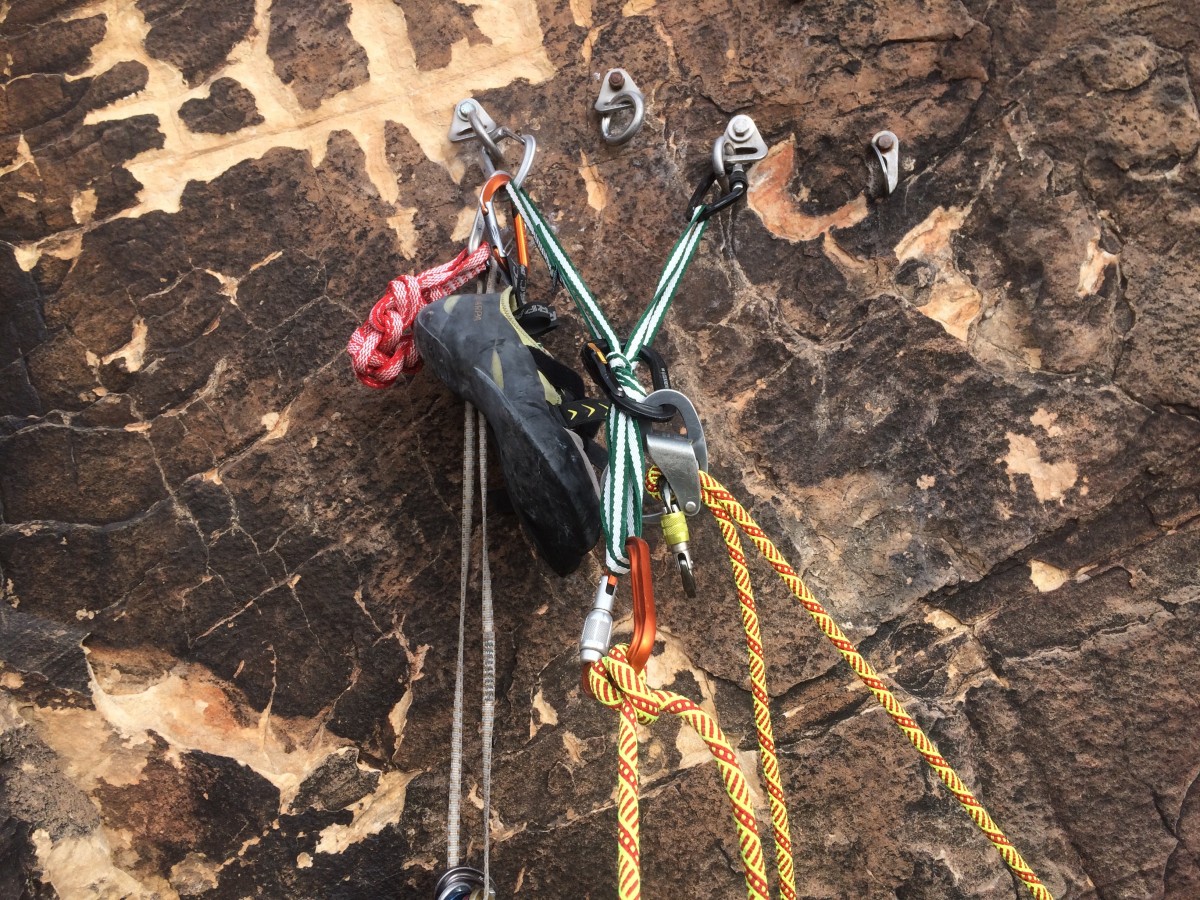When you are on the sharp end of this rope, then a well-stocked rack is equally as critical as a trusted belayer. If you are only getting into trad climbing, then You Will Need to know how to select and utilize the following:
- Slings (also Called runners)
- Webbing
- Cord
All these things are adaptable to several applications and behave as multi-tools on your scaling arsenal.
Growing Slings
Even though it can be produced a variety of ways, a sling (also called a runner) is usually made by stitching a webbing section to a loop. A sling may be utilized as an elongated quickdraw to allow your rope to operate straighter and reduce friction on drifting paths, or it may be utilized to prepare an anchor.
Slings come in many different lengths, widths and weights. Longer slings are more capable of reducing rope drag compared to a quickdraw, however, will also be lighter and thicker.
Are a beneficial span –approximately two or three times more than many quickdraws; they are a fantastic period to put on over a shoulder or within an alpine quickdraw. Provide you higher expansion for reducing rope drag or placement expert; an ideal size for construction two-bolt, fixed anchors, they may be worn doubled over a shoulder or as a alpine quickdraw. Are great for looping massive stones and for linking three security points to produce an anchor. And shorter) are a tweener size which would not be used frequently; a few climbers use them for tying off pitons.
Quickdraw slings are all presewn slings which allow you to create your personal’draws by incorporating the carabiners you decide on.
Sling MaterialsFor many years the major material in scaling slings has been nylon. Polyester is also used, however it is not anywhere near as prevalent as nylon. In the last several decades ultra-high-molecular-weight (UHMW) polyethylenes, together with new names such as Dyneema, Dynex and Spectra have gained fame. Some webbing is produced by mixing nylon with these super-strong branded substances.
The substance of a sling affects the weight, durability, strength, possible use and cost of a product:
Benefits of nylon:
- Cheaper
- Holds knots better and knots are more durable, Because of Its stretch and feel
- Stretch and increased melting temperature allow it to manage dynamic forces (drops )
- Ultralight, Because of an ultra-high strength-to-weight ratio
- More UV resistant
- Won’t freeze as it gets moist
Provided that you take more care in mind tying and you also prevent any situation in which a drop load is not also backed with a dynamic rope, Spectra, Dyneema and Dynex may be utilized for many climbing applications.
Growing Webbing
Many trad climbers take along extra segments of webbing to make custom-length slings for building or extending a anchor. Volume webbing is sold by the foot, either in spools or in segments.
There are two Kinds of webbing:
- Tubular webbing is your norm for scaling. Growing webbing’s tubular geometry makes it more powerful and stronger than a comparable width of horizontal webbing. It is also more pliable, therefore knots connected with it are equally simpler to make and more powerful.
- Flat webbing is usually employed for replacing back straps, creating your etriers or lashing down equipment.
Available widths for majority tubular webbing comprise 1″ and 5/8″. 1 inch is the typical width for creating anchors, while 5/8″ is frequently utilized to make home made slings. (Horizontal webbing comes in many different widths, the most frequent ones being two” and 1″.)
Bulk tubular webbing can be found in”climbing specification” and”military specification.” Climbing spec is thicker, thicker and slicker, whereas army spec is thinner, lighter and has a rougher surface feel. Both are extremely durable, but climbing-spec webbing is a little more powerful and more readily attached, and it retains knots more firmly. (REI typically conveys only scaling spec tubular webbing.)
Bulk webbing is just accessible nylon. If you create your own slings, tie your nylon webbing using a water knot that’s long tails (at least 2″ long).
Growing Cord
Cord is helpful for producing custom-length slings, like a cordelette, that may be utilised in anchor structure or in friction hitches for rappels and help climbing. It is sold by the foot or in segments: 20- or 30-foot segments are typical spans.
Much like slings, cord can be found in two distinct substances Perlon (a sort of nylon) and UHMW polyethylene (such like, Dyneema or Spectra).
The substance affects the weight, durability, strength, possible use and cost of a product:
Benefits of Perlon:
- Cheaper
- Holds knots better and knots are more durable, Because of Its stretch and feel
- Stretch and high melting temperatures allow it to manage dynamic forces (drops )
- Ultralight, Because of an ultra-high strength-to-weight ratio
- More UV resistant
Shared Cord Employs
Cordelette: Utilize 18 to 20 ft of 7mm or 8mm nylon cable or 5mm high-strength UHMW polyethylene (like Spectra or Dyneema) tied in a loop. Utilize a double fisherman’s knot to get Perlon cable or a triple fisherman’s knot to get your thinner UHMW polyethylene cord.
This installation could work for everything in creating a climbing anchor into creating your very own personal anchor system (PAS).
Self-belay loop: Use a two – to 3-foot span of 5 – 8mm Perlon cord tied into a loop using a double fisherman’s knot. This is a great length to generate an autoblock hitch or prusik hitch to use as a backup brake while rappelling. These loops also be convenient in help climbing and crevasse rescue. The period of the loop is based upon the specific usage and it could take some experimentation to get it just perfect.

